by California Casualty | Safety |
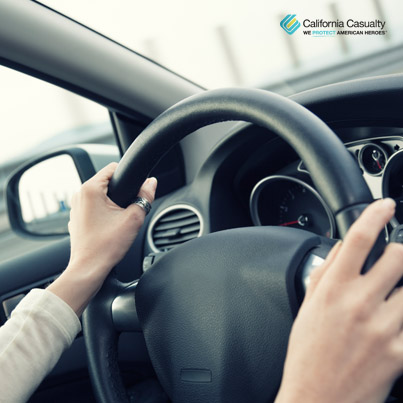
Most of us spend at least 5 days a week driving to work on a regular basis. So if you commute an hour a day, that is 5 hours a week, 20 hours a month, and 240 hours a year driving. And that’s just driving to work, not including errands run to/from work or on days off.
With that much time in the car, it’s crucial to have good posture while driving. If any of these signs look familiar, it is time to make adjustments.
Bad Posture includes:
- Poked Neck
- Shoulders Hunched Forward
- Upper Back Rounded forward
- Pelvis slouched
If you said yes to having any of the above, odds are it came from sitting in front of the computer. These symptoms can lead to bigger issues like constant headaches, back pain, and more. Safety is a top priority, so if any of these next exercises cause more pain, please refrain from doing them.
Seat Adjustment: Keep your seat height high (as it can comfortably go). Make sure you can see complete vision of the road, and your feet can comfortably reach the pedals. If the seat is too low, it will cause slouching and result in rounded posture which is what we want to avoid.
Lumbar Support: See that the back of your seat fits comfortably with the natural arch of your lower back. If your car does not have this feature, use a rolled towel or small pillow instead. If the lumbar support is not correct, this can leave you with the tendency to round your back.
Elbow Position: Keep your elbows low and close to your body, in a comfortable position. Don’t flare them out. This keeps your shoulders safe and in a neutral place. Don’t place your elbows on the side of the window, this makes the elbows flare-ending in bad posture.
Change your Driving Position: Develop a range of different positions for driving. Sitting in the same position can cause discomfort.
As said before, safety is a main concern. Many long–term injuries can be prevented by protecting yourself and maintaining good health.
by California Casualty | Safety |
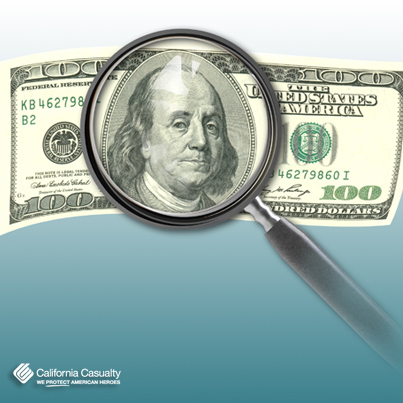
Do you know anyone, other than an accountant, who really enjoys filing their tax returns? As if it isn’t stressful enough assembling all the documents, trying to decipher the forms and double checking the math, there is a new concern – tax fraud and identity theft. The IRS has noted a 400 percent surge in phishing and malware incidents this year, and the Treasury Inspector General estimates fraudulent returns will add up to $21 billion dollars in 2016.
Once again the IRS is warning that thousands of us are at risk. Most won’t find out until they file their taxes and get notified that someone has already used their Social Security number to claim a false refund. This will result in all kinds of headaches and delay their legitimate return.
Here are the top three of the IRS’s “Dirty Dozen” list of tax scams:
- Aggressive phone callers saying they are from the IRS threatening immediate arrest, deportation or license revocation unless you settle an outstanding balance via wire transfer or preloaded debit card
- Fake emails purporting to be from the IRS (or TurboTax) asking for “missing” personal information to secure your refund, or directing you to links that contain malware
- Fraudulent tax return preparers who use your personal information to perpetrate refund fraud, identity theft and other scams
To battle the problem, the IRS has published these tax-time security tips:
- Keep computers protected with strong passwords and strong virus/malware protection
- Avoid phishing scams: don’t respond to emails, tweets or phone calls asking for personal information or payment – the agency never initiates contact via phone, email, text or electronic media
- Don’t open attachments in emails unless you’re sure who sent it and why
- File returns early and do so electronically
- Choose your tax preparer carefully and ask if they have an IRS Preparer Tax Identification Number
- Never carry your Social Security card in your purse or wallet
If you receive a suspicious email message, the IRS asks that you forward it to them at [email protected]. They ask that you report IRS-impersonation calls at www.tigta.gov
While the IRS has instituted new programs and resources to try and prevent tax ID theft, they warn that crooks continue to find new, more sophisticated ways to capitalize on our money. That’s why they have a comprehensive list of information about tax-time identity theft and helpful links at https://www.irs.gov/uac/Identity-Protection.
These are signs that you could be a victim of tax-related identity theft:
- More than one tax return was filed using your SSN
- You are notified you owe additional tax, have a refund offset or had collection actions taken against you for a year you did not file a tax return
- IRS records indicate you received wages or other income from an employer you never worked for
And, if it happens to you it can be costly in both time and money. A Bureau of Justice Statistics survey found the average loss per ID theft victim was $1,343, and most spent at least a full day to clear up the issue, however some didn’t see a resolution for months.
Nobody has time for that. That’s why California Casualty provides free ID theft protection with every auto and home insurance policy. Through our partners at IDT911, not only is your identity and personal information protected, but you’ll work with a resolution specialist in case of:
- Tax Fraud
- Social Media Compromise
- Email Compromise
- Child Identity Theft
- Break-in Recovery
- Travel Identity Theft
- Much More
Contact a California Casualty advisor today for a free auto and home insurance policy review and learn about our free ID theft protection at 1.800.800.9410 or visit www.calcas.com/identity-theft.
Sources for this article:
https://www.irs.gov/uac/Newsroom/Consumers-Warned-of-New-Surge-in-IRS-Email-Schemes-during-2016-Tax-Season-Tax-Industry-Also-Targeted
https://www.irs.gov/pub/irs-pdf/p4524.pdf
https://www.irs.gov/uac/Newsroom/IRS-Wraps-Up-the-Dirty-Dozen-List-of-Tax-Scams-for-2016
https://www.consumer.ftc.gov/articles/0008-tax-related-identity-theft
https://www.bjs.gov/content/pub/pdf/vit14.pdf
by California Casualty | Safety |
You’re driving along, paying attention to the traffic around you when suddenly a sight catches your eyes. Could that be what it seems to be? You look again and yes, it’s an electric road sign with a catchy or humorous message.
April is National Distracted Driving Awareness Month. In 2014, more than 3,100 people died and 431,000 were injured in motor vehicle crashes involving distracted drivers. Research finds drivers 15-19 years old were involved in the greatest number of distracted driving crashes, but more and more adults are also using technology behind the wheel.
While it’s a serious problem, some states are using funny or out-of-the-box messaging to discourage dangerous and distracted driving.
If you haven’t seen them, take a look below.
Iowa has been very active in alternative messages to help drivers pay attention:
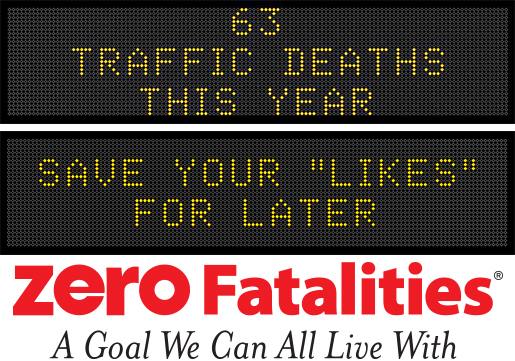
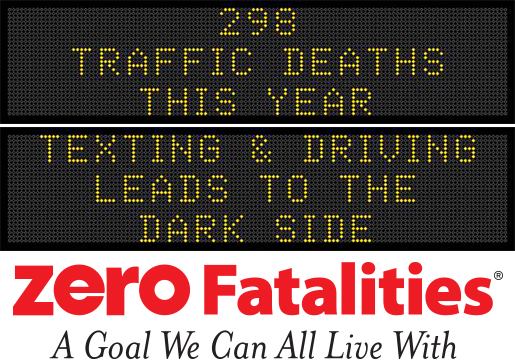
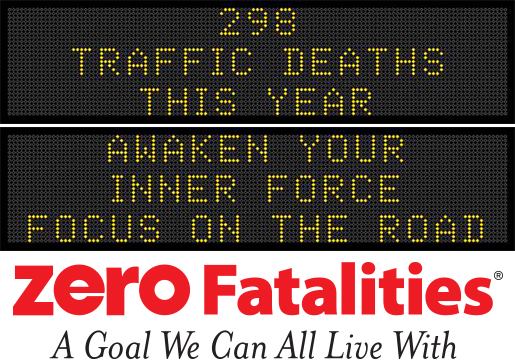
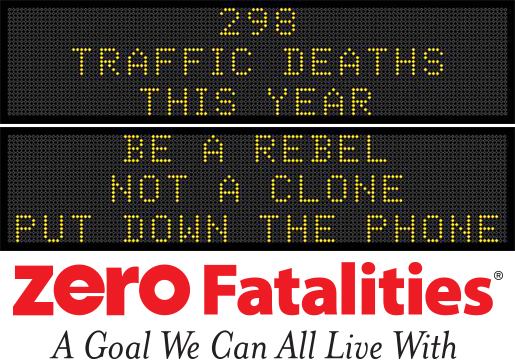
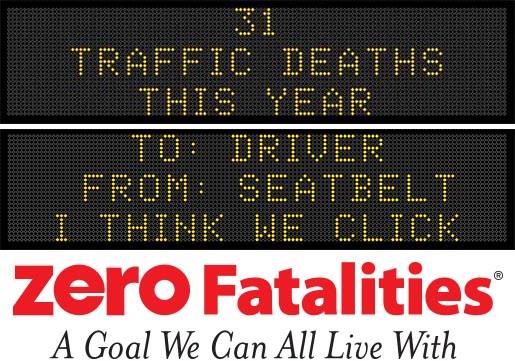
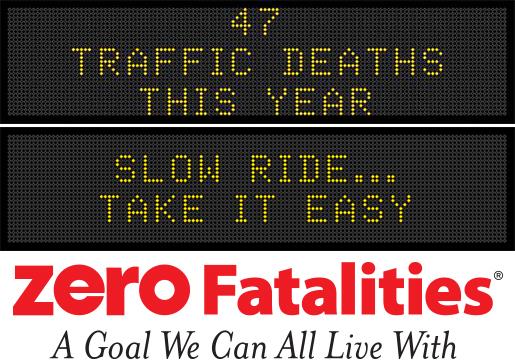
Arizona is also known for their pop-culture messaging to dissuade drivers from choosing the wrong path behind the wheel:
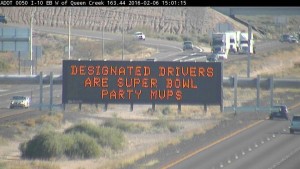
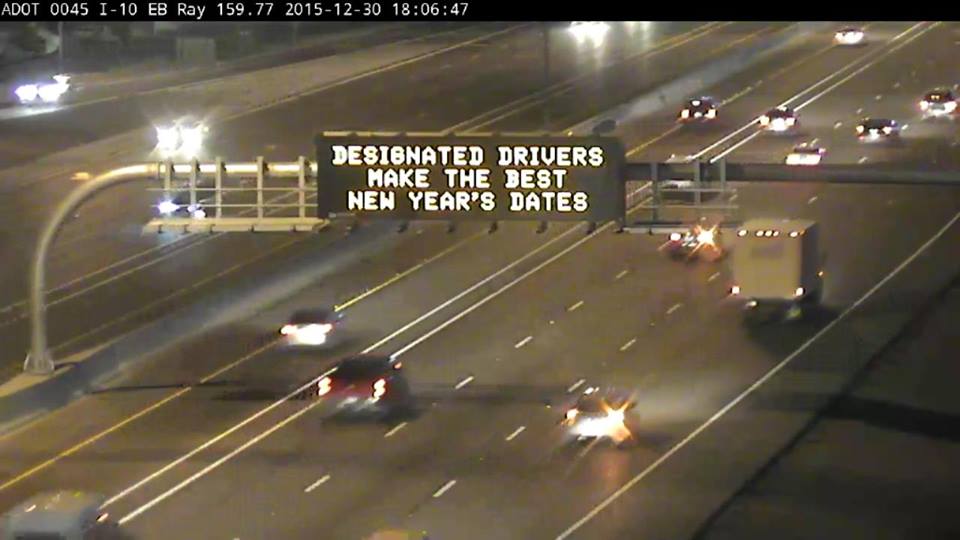
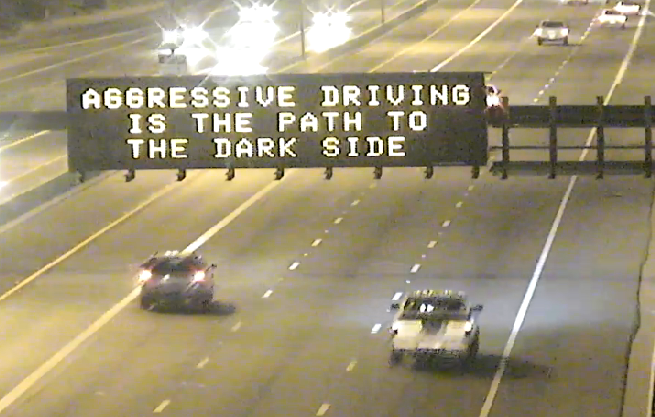
The Massachusetts Department of Transportation has also used some eye-catching signs:
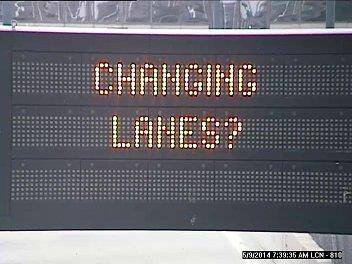
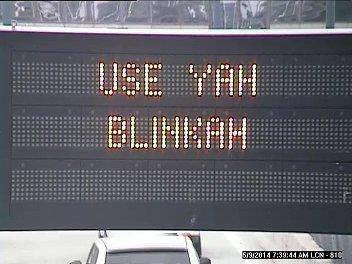
Even Utah is resorting to some off-the-wall signs, inviting the public to submit messages for their “Message Monday” program, which has produced:
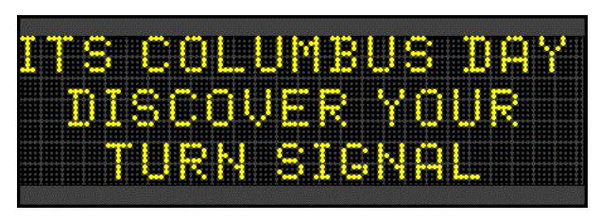
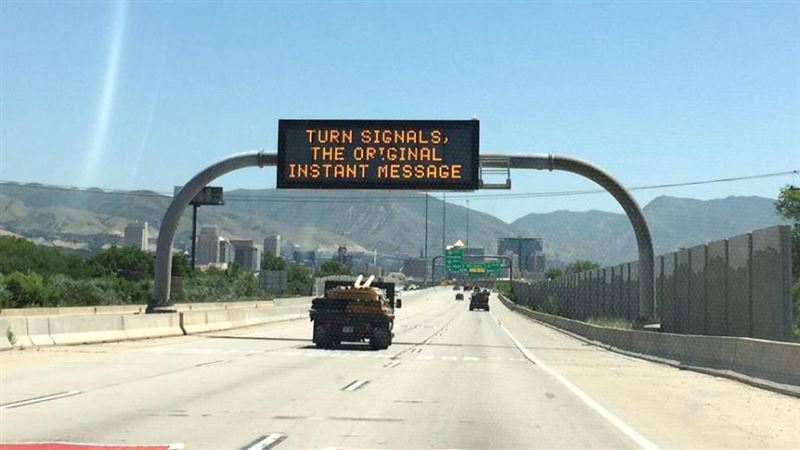
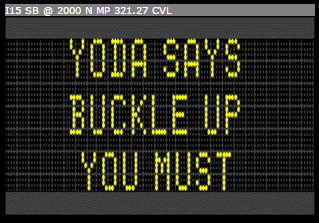
While there is some debate on how well the funny signs work, they are making safe driving a much talked about issue, often shared on social media.
Distracted driving is a real and deadly problem. Reading an average text takes your eyes off the road for 5 seconds. If you are driving 55 miles per hour, that’s like traveling the length of a football field blindfolded.
That’s why it’s imperative that drivers:
- Not text while driving
- Prevent passengers from loud or distracting behavior
- Avoid using cell phones while driving
- Don’t eat or drink behind the wheel
- Be aware that navigation devices and other electronic devices can cause dangerous distractions to drivers
- Wear seat belts, obey traffic laws and keep alert to traffic around them
California Casualty is committed to preventing distracted driving. We’re a founding member and continued partner of the Impact Teen Drivers program that provides proactive, peer-to-peer messaging and education about the dangers of distracted driving. Learn more about the effort at www.impactteendrivers.org.
California Casualty can also protect you from distracted drivers. Contact one of our advisors today to make sure your auto insurance is up-to-date at 1.800.800.9410 or visit www.calcas.com.
by California Casualty | Safety |
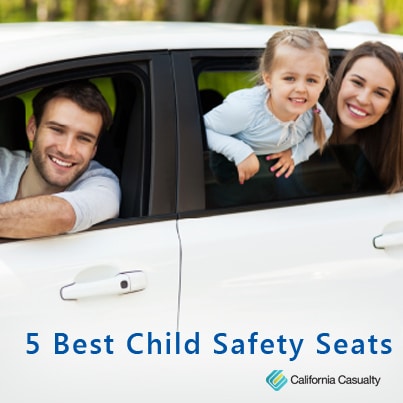 Child safety seats save lives. Protecting infants while riding in a car isn’t just a responsibility, it’s the law. Every state in the nation requires children up to three years of age to be secured in car seats, with booster seats required for most children up to 10 years old. Keep in mind that the risk of injury in a crash is reduced 45 percent if children are properly restrained. But how do you know which do the best job of cocooning your most precious cargo?
Child safety seats save lives. Protecting infants while riding in a car isn’t just a responsibility, it’s the law. Every state in the nation requires children up to three years of age to be secured in car seats, with booster seats required for most children up to 10 years old. Keep in mind that the risk of injury in a crash is reduced 45 percent if children are properly restrained. But how do you know which do the best job of cocooning your most precious cargo?
Consumer Reports has identified the five best car seats for your baby. All five performed well in new front impact tests that simulated a 35 mile per hour crash and scored well for ease-of-use. The new testing procedure is said to provide parents with the information needed to more easily compare the safety of seats designated for infants.
The recommended car seats are:
- Chicco KeyFit and KeyFit 30
- Combi Shuttle
- Cybex Aton 2
- Safety 1st onBoard 35 Air
- UPPAbaby Mesa
Since the cost of these seats range from $150-to-$300, Consumer Reports lists others that cost slightly less but still perform well overall:
- Safety 1st Comfy Carry Elite Plus
- Graco SnugRide 30 Classic Connect
The Insurance Institute for Highway Safety (IIHS) also does extensive testing for their booster seat best picks for parents and grandparents. However, anyone who used the 2014 IIHS ratings should know that two of their best booster seat recommendations are now not recommended. The IIHS warns that initial testing on the Eddie Bauer Deluxe Highback 65 and the Safety 1st Summit 65 did not detect issues with the positioning of the shoulder belt. You can see their list here.
When you get the proper car seat, there are some other important facts to keep in mind:
- Nine out of 10 child car seats were found to be installed incorrectly
- Nearly half of all child car seats are not compatible with motor vehicle seats
- Many parents move their children out of booster seats too early
- Families continue to use old unsafe seats or ones that have been recalled
When installing a car safety seat you should:
- Always do so in the back seat, using the center most position
- Make sure to use the correct seat for your child’s age and size
- Keep infants in rear facing seats
- Secure the seat so it moves no more than one inch from side to side
Just as you want to do everything you can to protect your children, make sure you also have the best auto insurance protection with the discounts you deserve. Contact a California Casualty advisor today for a no- hassle policy review and comparison at 1.800.800.9410 or at www.calcas.com.
Sources for this article:
https://www.consumerreports.org/cro/news/2014/04/5-best-car-seats-for-your-baby/index.htm
https://www.ghsa.org/html/stateinfo/laws/childsafety_laws.html
https://www.iihs.org/iihs/ratings/child-boosters/best-bets
https://www.safercar.gov/parents/CarSeats/Car-Seat-Safety.htm
https://www.safetyandhealthmagazine.com/articles/12967-researcher-42-of-child-car-seats-not-compatible-with-vehicle-seats
by California Casualty | Safety |

Do you know anyone, other than an accountant, who really enjoys filing their tax returns? As if it isn’t stressful enough assembling all the documents, trying to decipher the forms and double checking the math, there is a new concern – tax fraud and identity theft. The IRS has noted a 400 percent surge in phishing and malware incidents this year, and the Treasury Inspector General estimates fraudulent returns will add up to $21 billion dollars in 2016.
Once again the IRS is warning that thousands of us are at risk. Most won’t find out until they file their taxes and get notified that someone has already used their Social Security number to claim a false refund. This will result in all kinds of headaches and delay their legitimate return.
Here are the top three of the IRS’s “Dirty Dozen” list of tax scams:
- Aggressive phone callers saying they are from the IRS threatening immediate arrest, deportation or license revocation unless you settle an outstanding balance via wire transfer or preloaded debit card
- Fake emails purporting to be from the IRS (or TurboTax) asking for “missing” personal information to secure your refund, or directing you to links that contain malware
- Fraudulent tax return preparers who use your personal information to perpetrate refund fraud, identity theft and other scams
To battle the problem, the IRS has published these tax-time security tips:
- Keep computers protected with strong passwords and strong virus/malware protection
- Avoid phishing scams: don’t respond to emails, tweets or phone calls asking for personal information or payment – the agency never initiates contact via phone, email, text or electronic media
- Don’t open attachments in emails unless you’re sure who sent it and why
- File returns early and do so electronically
- Choose your tax preparer carefully and ask if they have an IRS Preparer Tax Identification Number
- Never carry your Social Security card in your purse or wallet
If you receive a suspicious email message, the IRS asks that you forward it to them at [email protected]. They ask that you report IRS-impersonation calls at www.tigta.gov
While the IRS has instituted new programs and resources to try and prevent tax ID theft, they warn that crooks continue to find new, more sophisticated ways to capitalize on our money. That’s why they have a comprehensive list of information about tax-time identity theft and helpful links at https://www.irs.gov/uac/Identity-Protection.
These are signs that you could be a victim of tax-related identity theft:
- More than one tax return was filed using your SSN
- You are notified you owe additional tax, have a refund offset or had collection actions taken against you for a year you did not file a tax return
- IRS records indicate you received wages or other income from an employer you never worked for
And, if it happens to you it can be costly in both time and money. A Bureau of Justice Statistics survey found the average loss per ID theft victim was $1,343, and most spent at least a full day to clear up the issue, however some didn’t see a resolution for months.
Nobody has time for that. That’s why California Casualty provides free ID theft protection with every auto and home insurance policy. Through our partners at IDT911, not only is your identity and personal information protected, but you’ll work with a resolution specialist in case of:
- Tax Fraud
- Social Media Compromise
- Email Compromise
- Child Identity Theft
- Break-in Recovery
- Travel Identity Theft
- Much More
Contact a California Casualty advisor today for a free auto and home insurance policy review and learn about our free ID theft protection at 1.800.800.9410 or visit www.calcas.com/identity-theft.
Sources for this article:
https://www.irs.gov/uac/Newsroom/Consumers-Warned-of-New-Surge-in-IRS-Email-Schemes-during-2016-Tax-Season-Tax-Industry-Also-Targeted
https://www.irs.gov/pub/irs-pdf/p4524.pdf
https://www.irs.gov/uac/Newsroom/IRS-Wraps-Up-the-Dirty-Dozen-List-of-Tax-Scams-for-2016
https://www.consumer.ftc.gov/articles/0008-tax-related-identity-theft
https://www.bjs.gov/content/pub/pdf/vit14.pdf
by California Casualty | Safety |

It’s one of those days: you woke up late and you are running behind. As you head outside to start the car, you find it’s covered in ice. The extra 15 minutes it will take to scrape and warm it up are going to make you late for work or school. While it may not help today, these essential winter hacks might make your life a little easier the next time another cold front sends temperatures plunging across the country.
Autos:
- Spray a mixture of two parts rubbing alcohol and one part water on a windshield to instantly de-ice it (and also unstick frozen windshield wipers)
- Use WD 40 in to prevent frozen key holes
- Thaw frozen car door locks and handles with hand sanitizer
- Park your vehicle with the windshield facing east to help defrost it when the sun rises
- Use kitty litter or car mats to provide traction if you get stuck
- Put plastic bags over unheated side mirrors overnight to keep them ice free
- Place a blanket or sheet on the windshield to keep it ice free overnight
- Cover wiper blades overnight with old socks so they will be ice and snow free in the morning
Around the House:
- Coat snow shovels with non-stick cooking sprays – the snow will slide off easier (this also worked on the plastic sleds my daughter and I used for sliding down hills faster)
- Slip old bread bags or sandwich bags over socks to make them water proof
- Use closet shoe organizers for gloves and scarves
- Take lukewarm showers to battle dry skin
- Place tin foil on walls behind radiators and space heaters to reflect more of the heat back into the room
- Leave the oven door open after cooking – the residual heat will add warmth to the house
- Run ceiling fans clockwise to push warm air down to living areas
- Open curtains and blinds on sunny days to let the sun warm your home
- Put hot water bottles or warm pans on cold sheets to warm them before you hop in bed
- Place a tray with pebbles inside the doorway to drain icy, wet shoes and boots to keep floors cleaner and drier
- Use a solution of two parts rubbing alcohol and one part hot water to safely remove ice from outside steps and sidewalks
Oh, and for those of you living in more temperate climates, keep these handy in case Mother Nature throws one of her occasional frozen curve balls and you’re stuck in a personal scene from the movie Frozen.
What winter weather hacks do you use? Share them with us so we can pass them along too.
You don’t need any hacks to make sure you have insurance to protect your auto and home; just call a California Casualty advisor today for a policy review or comparison at 1.800.800.9410 or visit www.calcas.com.
Sources for this article:
https://www.wimp.com/easy-way-to-remove-ice-from-car-windshield/
https://www.weather.com/safety/winter/news/winter-lifehacks
https://pioneersettler.com/cold-weather-hacks/



















